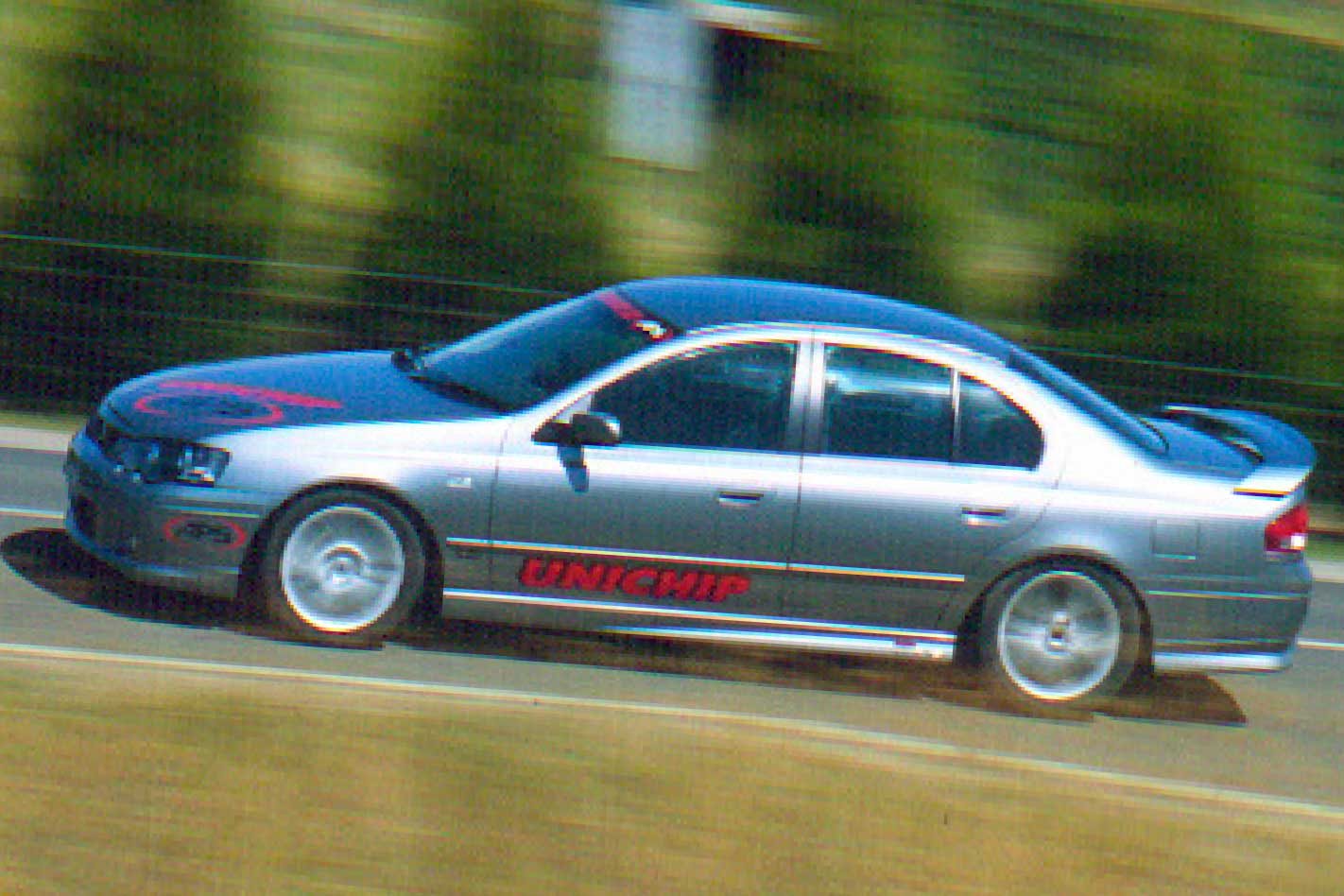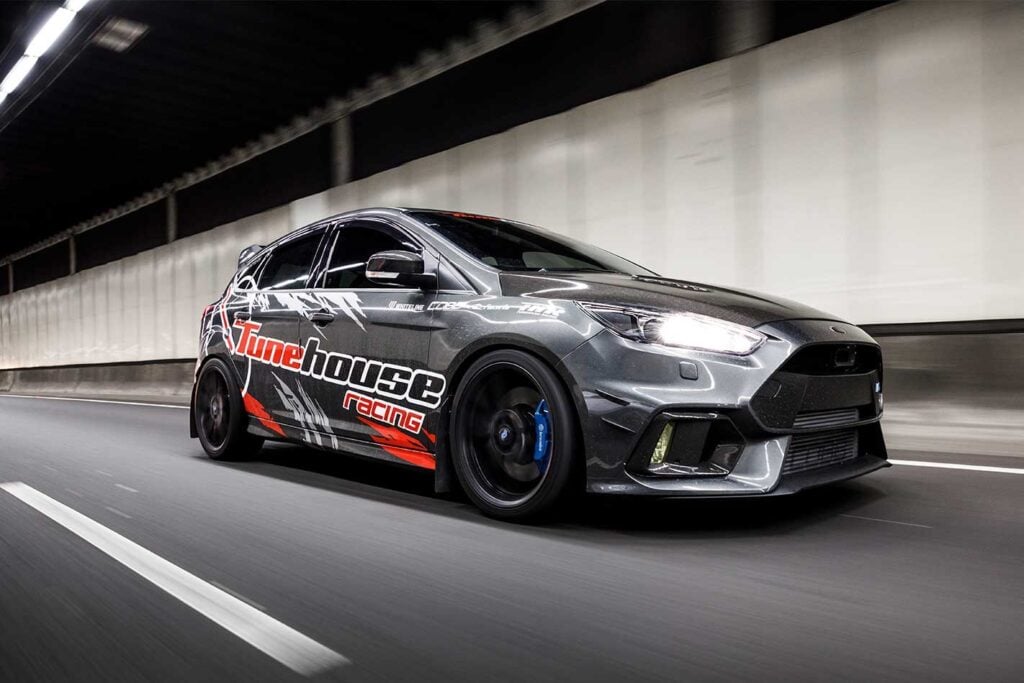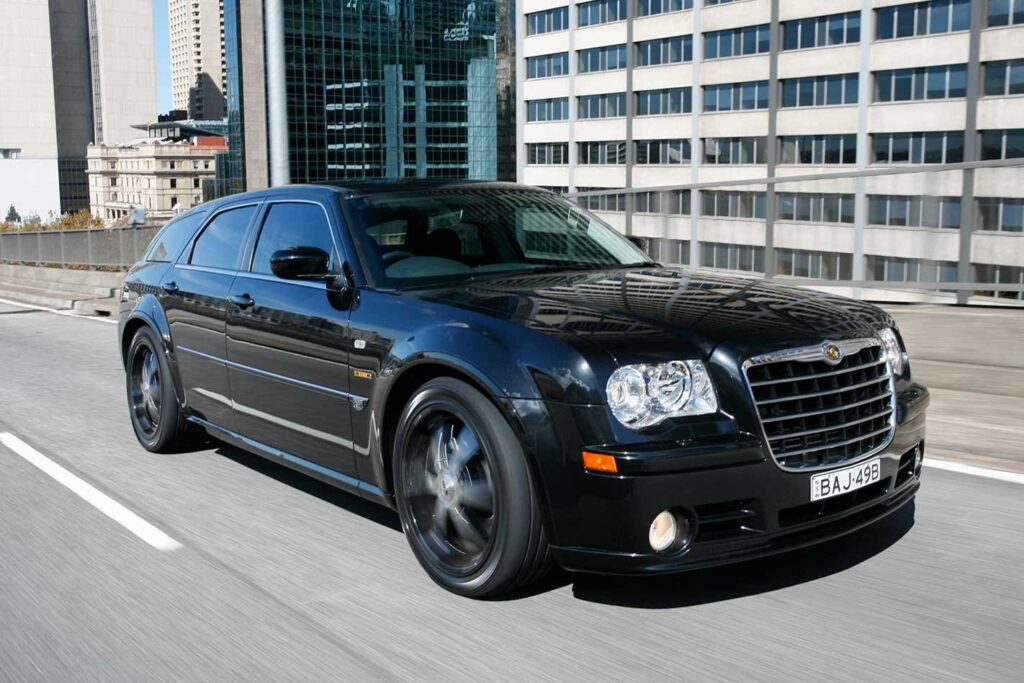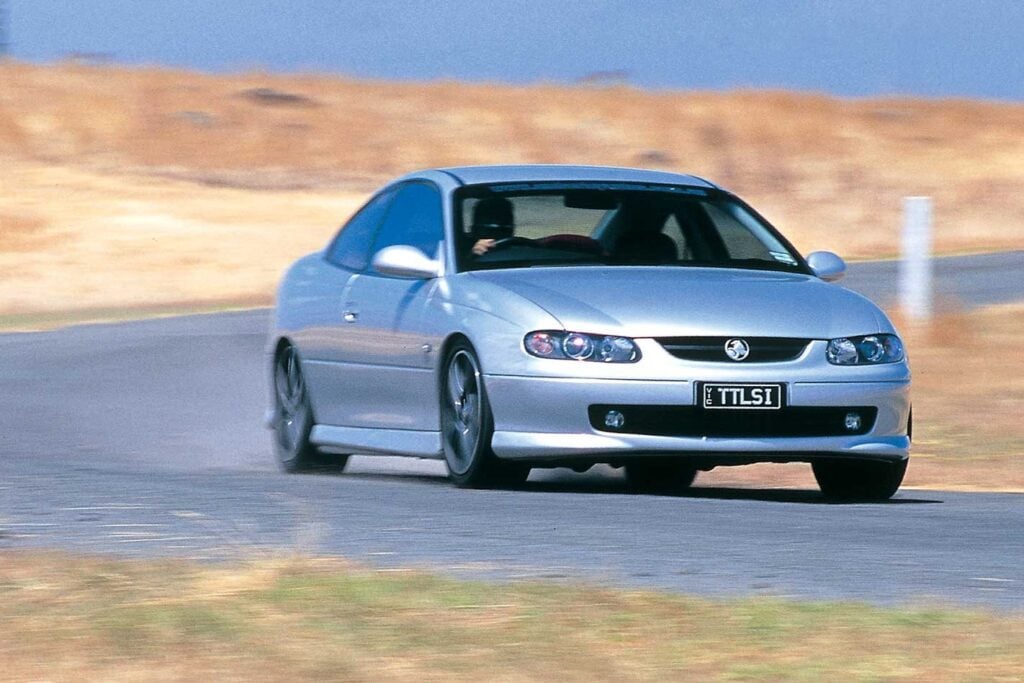The APS Phase III XR6 Turbo is at Avalon Airport, near Melbourne, to crack 300 kilometres an hour. And it isn’t about to disappoint.
This feature was originally published in MOTOR’s Hot Tuner 2004 issue
All eyes are on the silver BA Falcon as it streaks across three kilometres of runway, vapour streaming from the bodywork, a shrill turbo whistle piercing the air. The XR6T is visibly faster than any of the mega-dollar exotics competing that day in MOTOR’s PCOTY testing, including the Lamborghini Gallardo.
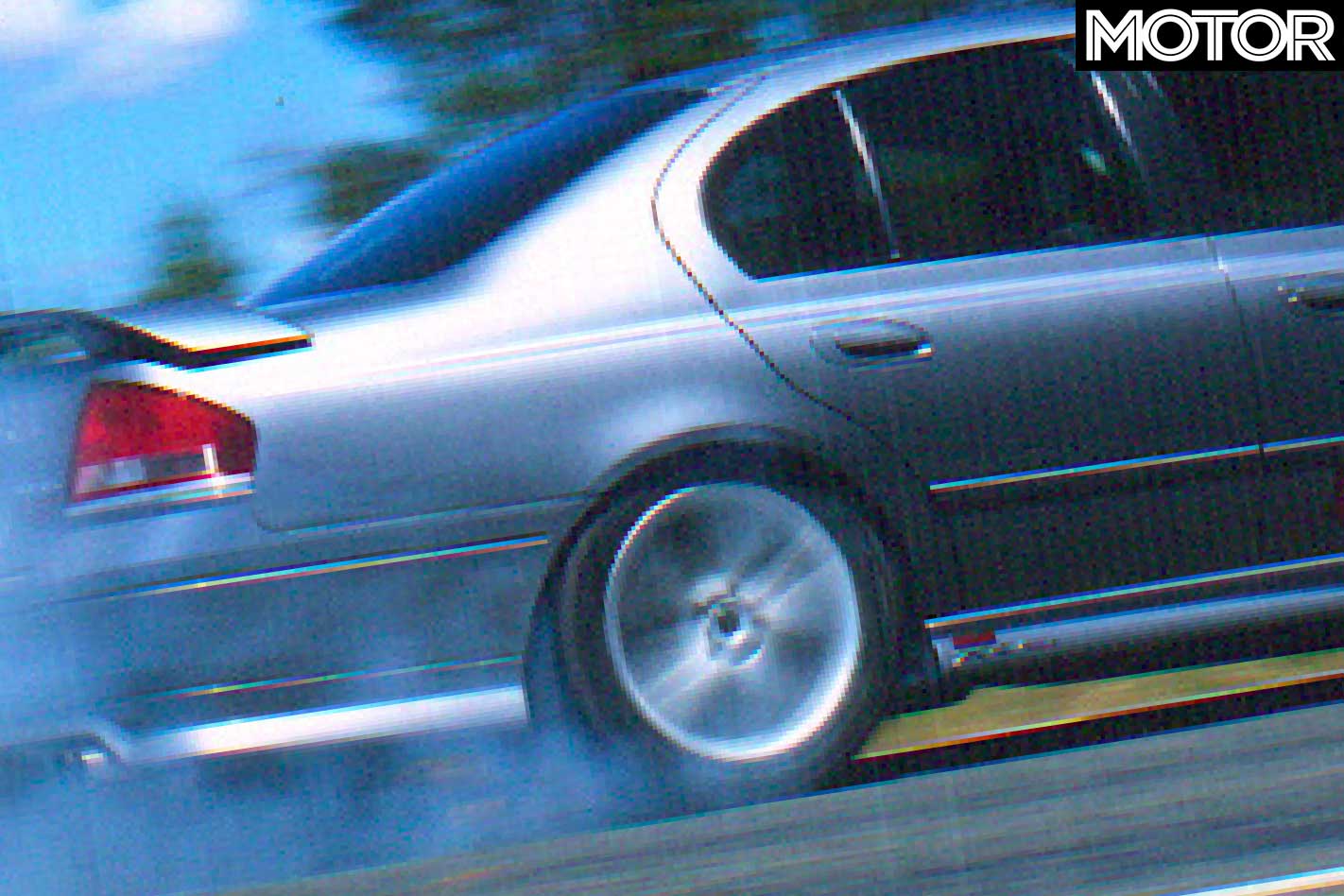
That’s an achievement for any specialist exotic, but for a four-door Aussie sedan, it’s incredible — clearly the fastest in the nation.
While others pick their jaws up off the ground, Peter Luxon and his crew from APS look calm. No doubt they are ecstatic, but they had made the engineering calculations and it’s only what they expected.
“We did the sums,” says Luxon, “and worked out that with only a minor final drive ratio adjustment and some 18-inch wheels, our production Phase III kit had the power to pull the 5900rpm rev limiter in top gear and push the Falcon body past 300 kays.”
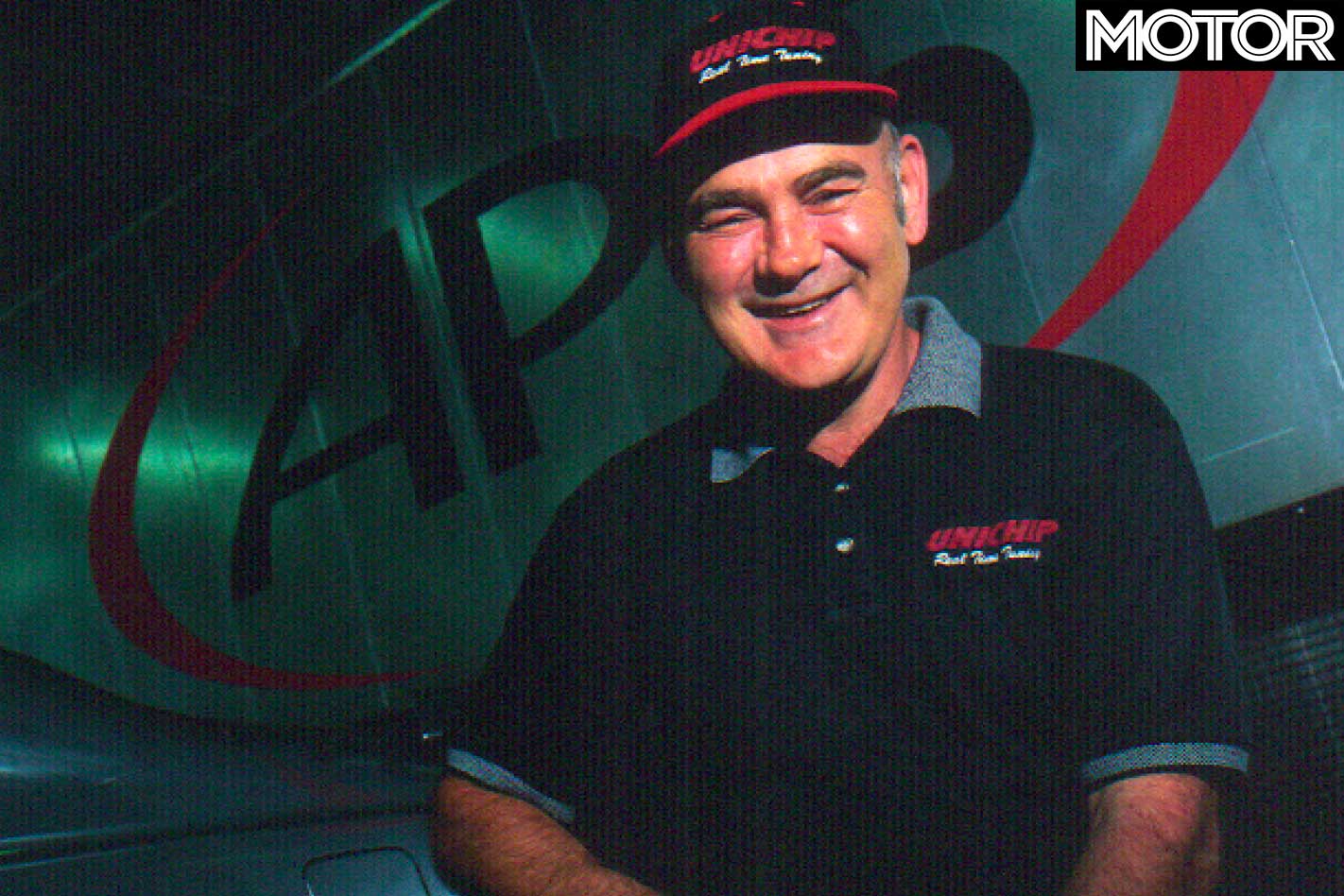
It could have gone faster, he says. The APS Phase III made only the one clean 300km/h-plus run down the strip, due to a top-speed limiter that had been altered but still interfered. “We have never needed to exceed the stock 230km/h XR turbo speed limiter before, so we haven’t put a lot of energy into defeating it,” says Luxon. “Give us another day of development and there won’t be an issue.”
Now to get really spooky. This test car has no factory-special parts. Other than the speed-limiter alteration, the 3.23:1 (XR8) diff ratio, the rear tyres and AP brakes (to keep the tester’s undies clean), it’s the same highly developed performance package anyone can have fitted to a turbo Falcon, and still walk away with change from 10 grand.
Power point
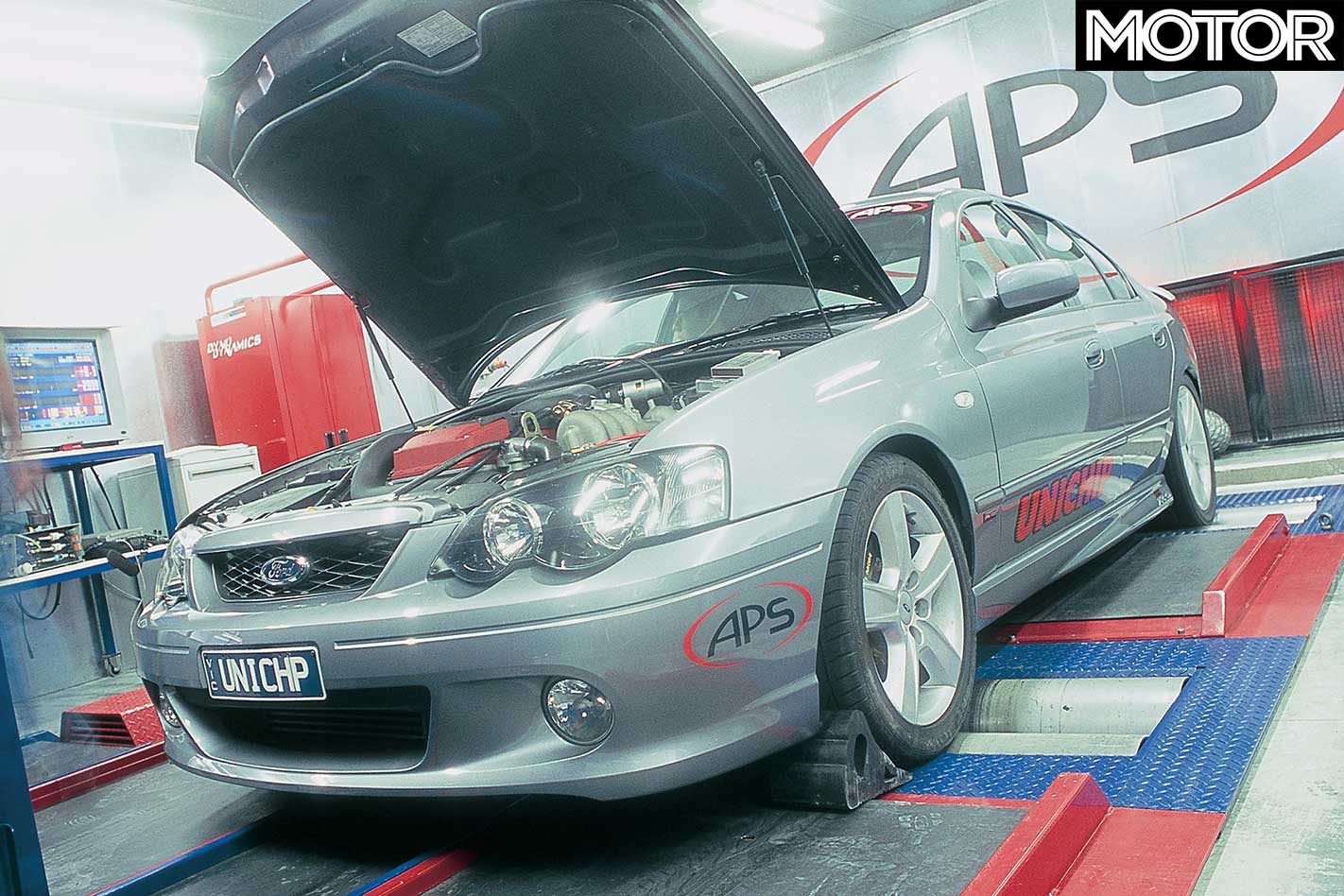
So how much power is in there? Luxon claims no more than 400kW at the crankshaft, a figure he backs up with a 340kW rear wheel dyno sheet. Factor in the 17 percent drive train loss (apparently ideal for the T5 manual behind the XR6T engine) and that’s about spot-on.
But to prove a point, Luxon offers to dyno the car and three full-power runs range between 345 and 355kW at the treads. A little high, and Luxon comments, “Looks like a decent top-speed run blew the cobwebs out and did it some good.”
Forget about stripping the engine down, changing turbochargers or upgrading manifolds. The APS Phase III kit requires none of this. The focus is on extracting the best possible performance from the factory parts.
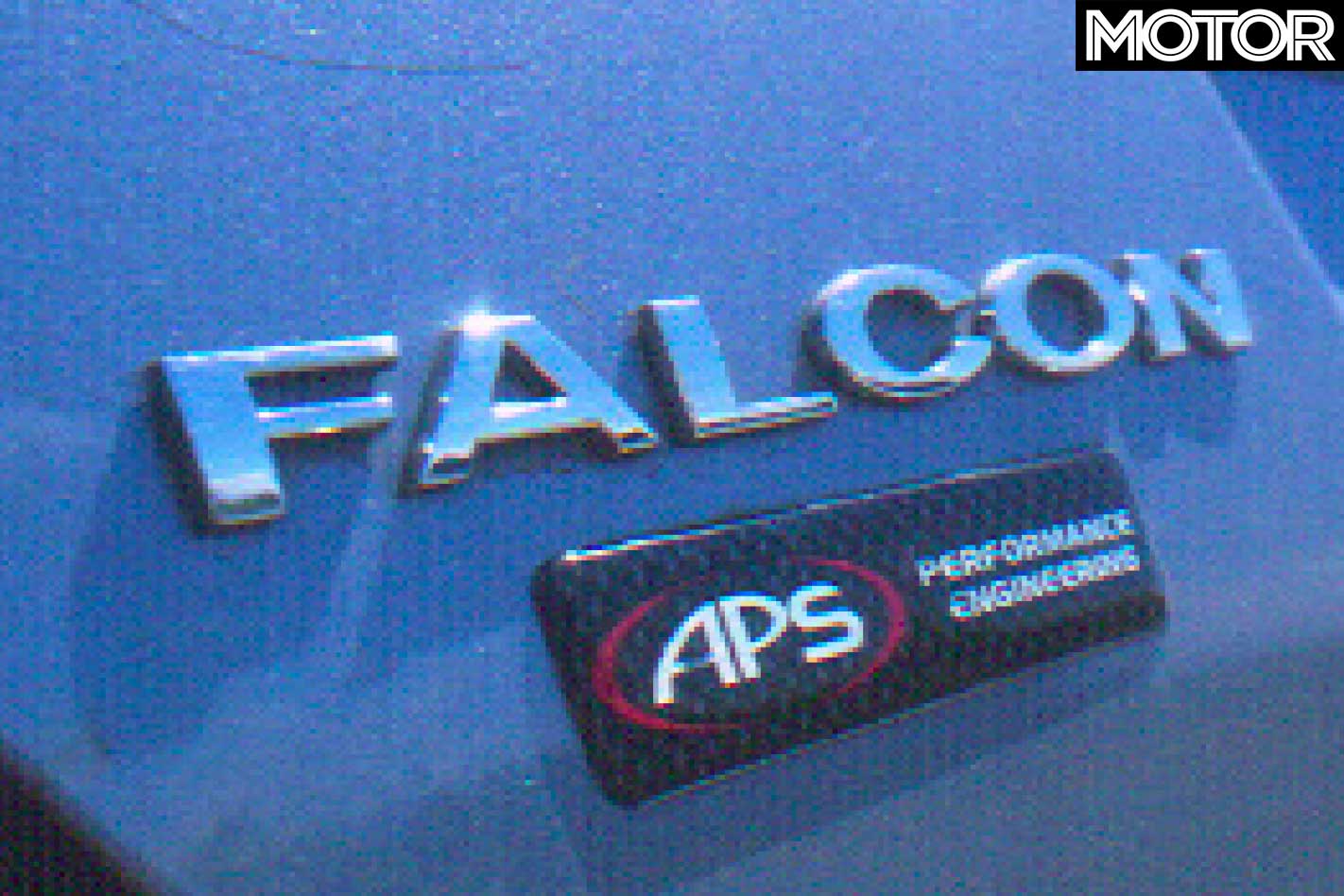
“These Fords have an extremely strong engine with good-looking, specially designed turbo pistons and a high-flowing cylinder head. We haven’t broken one of these engines in testing and we have genuinely tried to find the limit.”
APS’s power secret is improved engine airflow. “There are some fairly substantial changes over the Phase II kit, which makes about 270 to 280kW at the wheels,” says Luxon. “We change the factory intercooler [at its limit in Phase II applications] to a larger air-to-air front mount, and change the plumbing across the top of the engine.
“The fuel injectors and fuel pump are larger, but the key to it all is in the tuning. Our programmable Unichip controls the 1.2 bar of boost pressure [17psi in the old money] and gives the engine precise fuel quantity and ignition timing.”
Dangerous goods
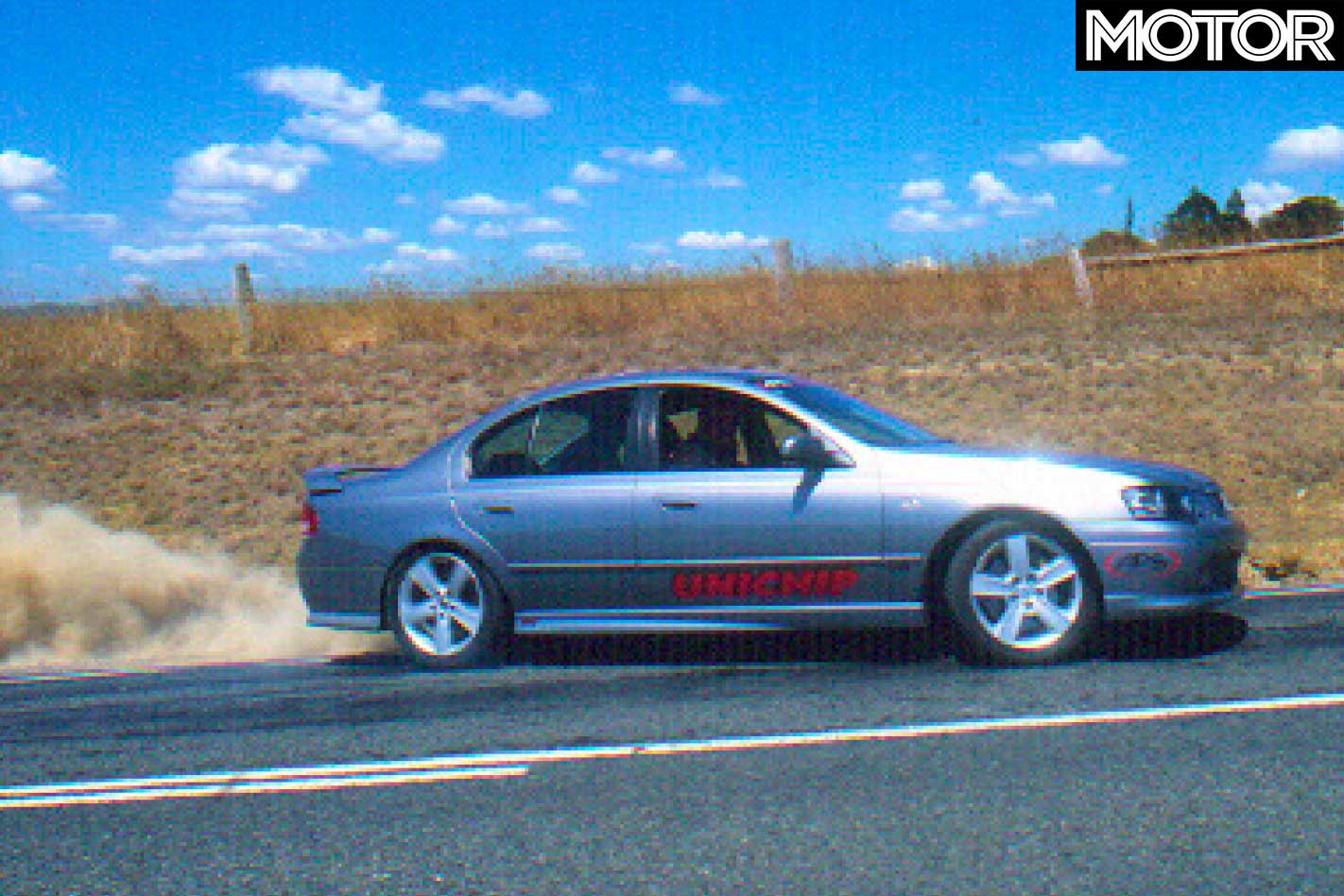
Enough of the tech specs. Chuck us the keys. Luxon is happy to oblige, but like any dangerous goods should, these come with a warning.
“Just be a little careful on the throttle,” he says, leaning in the window. “It tends to want to break traction fairly easily.”
Those expecting the whoofle and sneeze of a blow-off valve or a lumping part-throttle soundtrack are going to be disappointed. Your nanna could drive this car. It has the typical creamy XR turbo response down low and a remarkably smooth, cough-free idle. By the time you read this, APS will very likely have the Phase III through ADR emission and noise testing and ready to fit as a road-legal accessory.
Big-power turbo cars are all about wide throttle openings and with a broad, vacant track at our disposal, nothing more need be said.
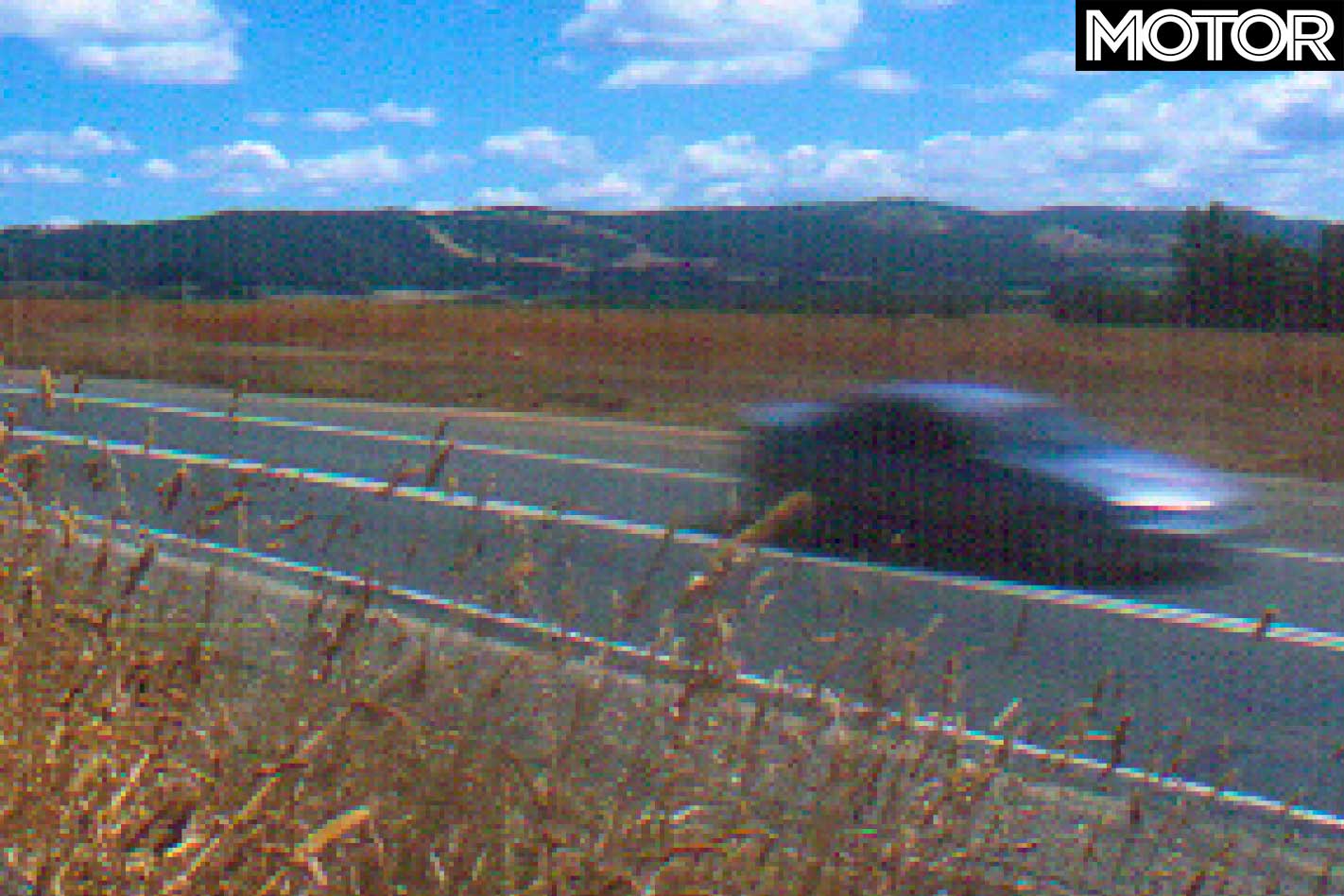
Off the basement, the Phase III feels like any other lightly tuned XR turbo, pulling progressively up to 3000rpm, with only a hint of audible menace through the cold air induction system. At about this rev point, substantial gobs of boost build and you need to tighten the hands around the tiller.
Nothing hits as hard as the APS Phase III. The integrated boost control system unleashes torque that belts the rear tyres, twists up the driveline and gives you a reverse bungee effect into the scenery.
The tacho rips so fast it’s as if the clutch is slipping, but you know instinctively that it’s the physics of tyre versus ground being overcome.
But it’s the searing top-end delivery that impresses the most. Rather than having a typical production turbo mid-range torque hump that falls away, slowing progress at high revs, the Phase III just keeps building grunt, seeming to accelerate harder with each gear change. There is no weak point, flat spot or chance to catch your breath. Even with the taller gearing (3.23:1 versus 3.45:1) of an XR8 on board, the acceleration is mind-numbing.
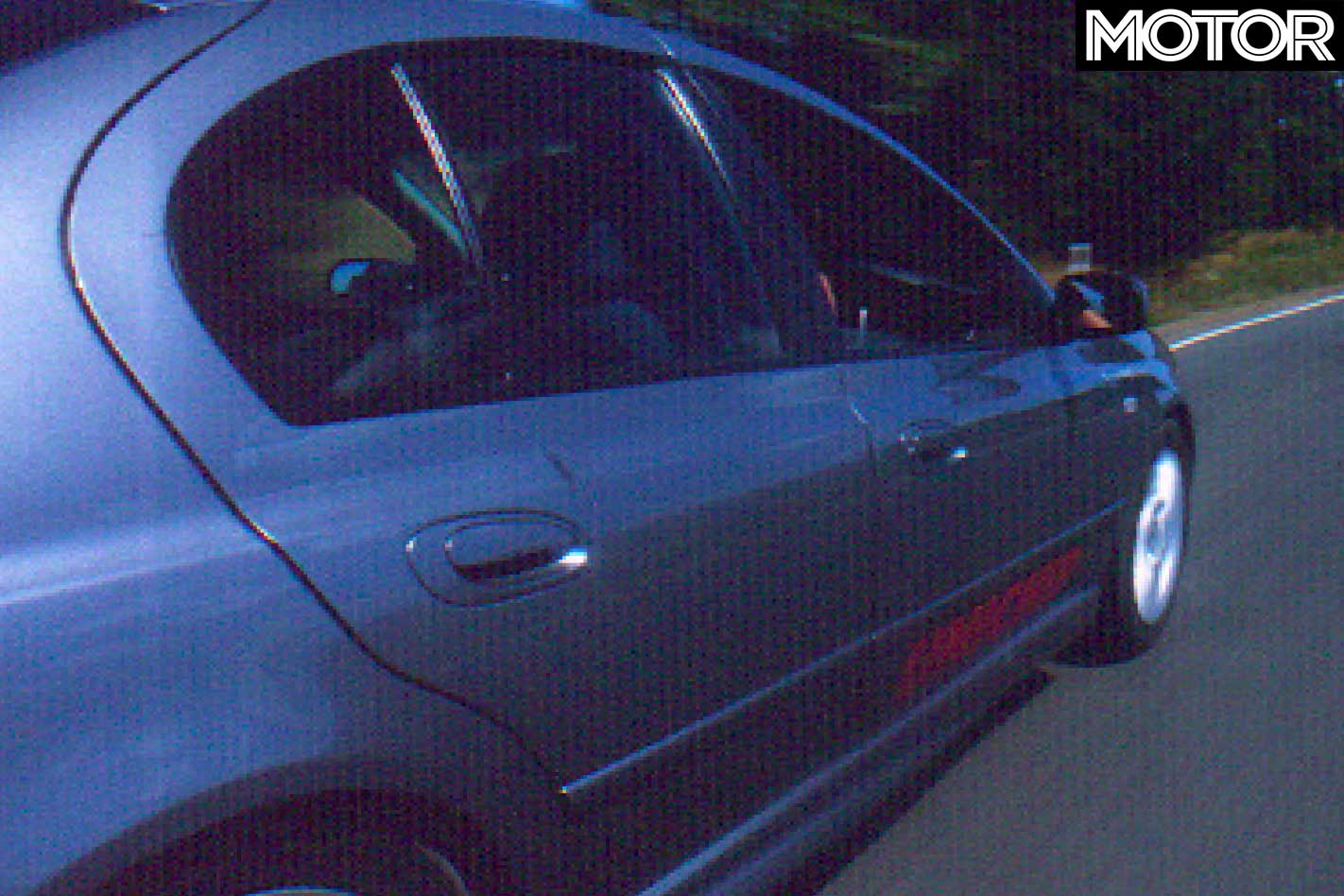
Official figures for the Phase III from Calder Park, on radial tyres, stand at 11.68 seconds and 195km/h for the quarter-mile sprint, which puts it up there with the fastest-accelerating Supercars. And that’s with a big Aussie framework and a bulging waistline.
“We haven’t found the top-speed limit of the XR6 Turbo package yet,” says Luxon the next day.
“There’s plenty more power to be had and lots of work to do on the car’s aerodynamics and gearing. We did some basic sums overnight and reckon that, with some more development, we should be able to top 350km/h without too much trouble.”
Not for the car, perhaps, but more than maths will be involved in driving it.
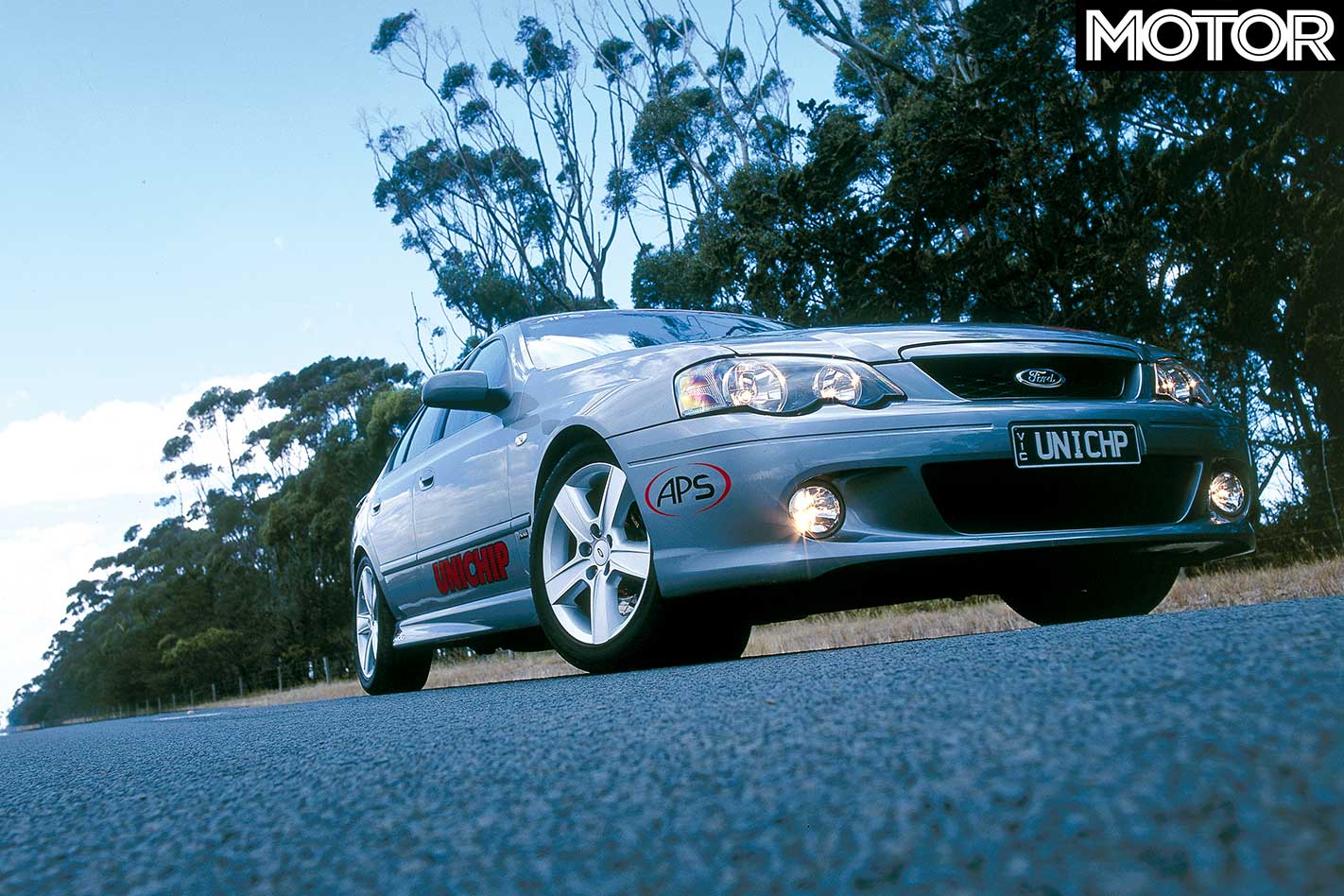
FAST FACTS 2004 APS Falcon Phase III XR6T
BODY: 4-door sedan DRIVE: rear wheels ENGINE: front-mounted 4.0-litre DOHC 24-valve turbo six POWER: 400kW @ 5700rpm (est.) TORQUE: 700Nm @ 3000-4000rpm (est.) COMPRESSION: 8.7:1 BORE x STROKE: 92.3mm x 99.3mm WEIGHT: 1685kg POWER-TO-WEIGHT: 237kW/tonne TRANSMISSION: 5-speed manual SUSPENSION: double wishbone, coil springs, anti-roll bar (f); Control Blade IRS, coil springs, anti-roll bar (r) L/W/H: 4944/1864/1444mm WHEELBASE: 2829mm TRACKS: 1553mm (f), 1571mm (r) BRAKES: 330mm disc, four-piston fixed AP caliper (f); 303mm solid grooved discs, single-piston calipers (r) WHEELS: 18 x 8.0-inch alloy (f & r) TYRES: 245/45 VR18 (f & r) PRICE: $54,535 (including kit)
0-400m: 11.68sec at 195km/h Top speed: 307km/h
Over 300km/h and it’s really moving – sideways
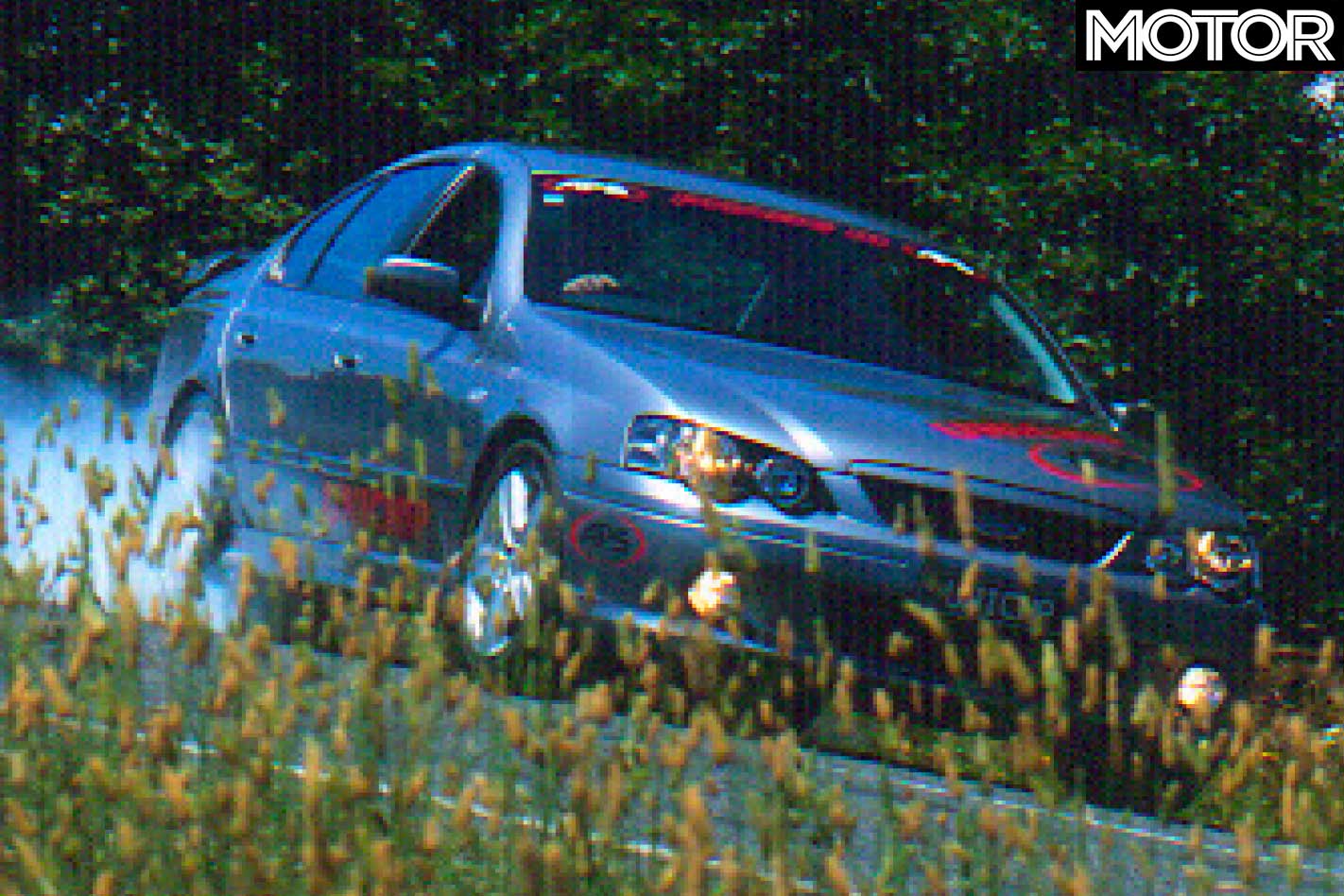
Peter’s troops aren’t naive about what can happen at very high speed, but they can’t be expected to know everything. The stuff they have thought of is the stuff I needed them to think of. There’s no way, for example, you’d try this on stock Falcon brakes, so four-piston APs are reassuring.
So it’s one last fiddle to temporarily disable the standard 230km/h limiter and blaze, quickly, before the computer figures out it’s been diddled.
As engines go, this is strong. Bloody strong. So strong that the sweeper onto the runway is best taken, delicately in third. Into fourth and the thing’s huffing and howling.
Falcons normally stall in fifth. Not this one. It just keeps surging. But then the air starts to play around the nose at, maybe, 260. Hard to know, with the speedo non-functional.
A bit faster and it starts to move all over the track. It’s getting to be seriously hard work with the tacho needle j-u-s-t off the limiter, maybe 30 revs shy. The engine’s not the problem, it’s the aero. Avalon’s airstrip is wide enough to land jumbos, but I doubt any of them ever uses this much width. It’s just walking the nose across the road and back again, sometimes sharply.
And then it’s over and through the trap. The aero is, if anything, worse under brakes. While moving off the throttle and onto the brake pedal, the thing steps a good three car widths sideways, then another three as the nose pitches. From there, it’s jinking left, then right, then back again until, around 230 or so, it all becomes fairly benign.
It took a lot of road to stop, probably because I hadn’t appreciated exactly how fast it was travelling. And it was travelling bloody fast, 307km/h didn’t seem right when it came over the radio, but, in hindsight, with the way it moved around, it kinda made sense. And I’m not real sure I want to do it again. –Michael Taylor
The Next Phase
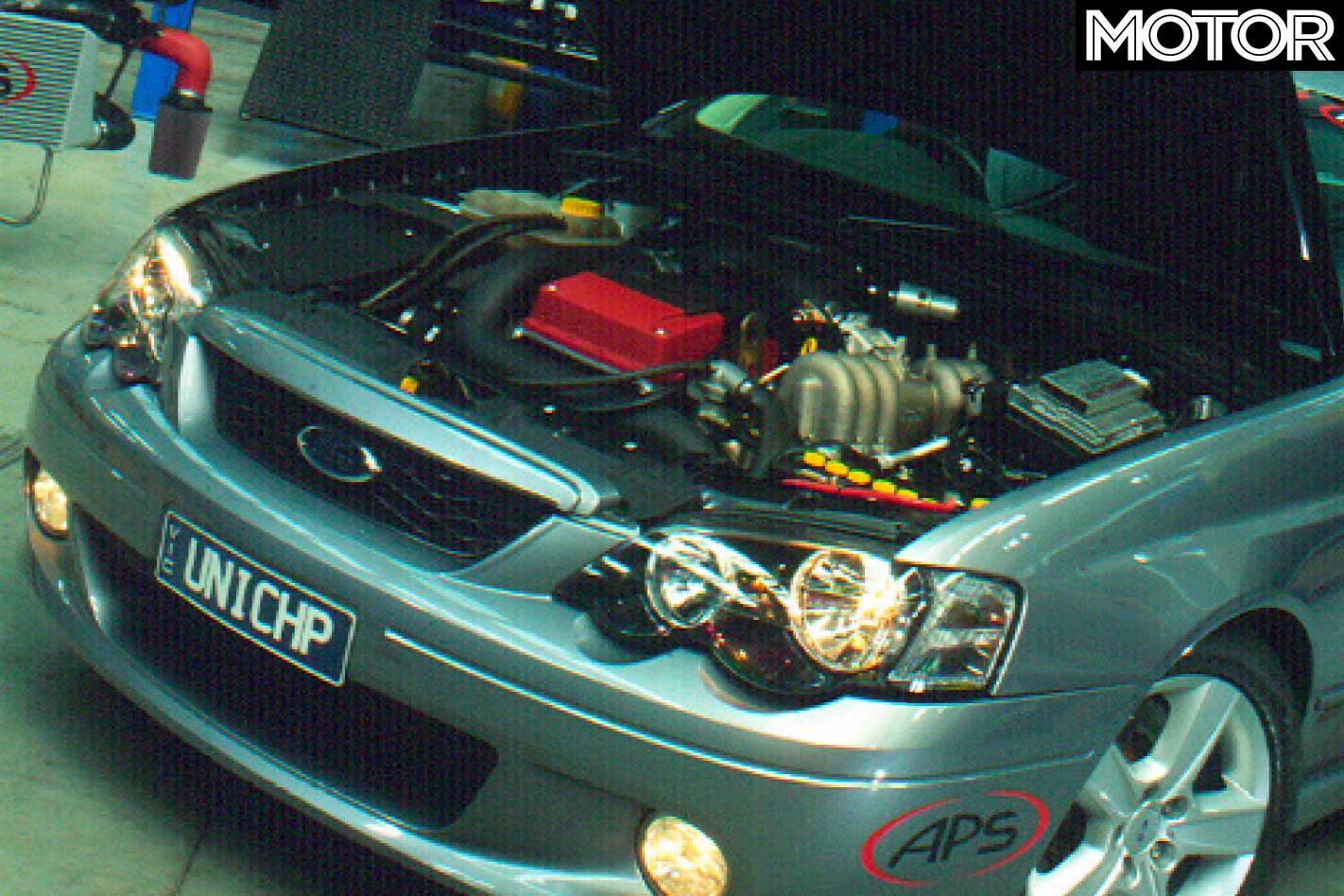
Psssst. Wanna hear about Phase IV, and even Phase V?
Among the Phase IV’s numerous tweaks, the top half of the inlet manifold has been replaced with a custom-designed plenum to house an additional six injectors that supply fuel for more than 500kW of crankshaft power.
APS’s Peter Luxon also reveals that, in testing, the Phase IV system has produced over 400kW of rear-wheel power, and there’s plenty left.
Phase V is on the drawing board, says Luxon, but the engine’s innards will need serious beefing-up. Pistons and conrods will be replaced with heavy duty items, with the turbocharger upgraded to a much larger 700kW-capable compressor.
With the right set-up and tuning, says Luxon, “One thousand horsepower, in the old money, shouldn’t be out of the question.” Gulp.
Torture Testing
The Phase III XR6T test mule has completed more than 140 dyno runs and numerous quarter-miles, and had a thrashing with the press behind the wheel.
With its 400kW (plus) of crankshaft power, the stock T5 XR6 Turbo transmission has stood up admirably. It has not been modified, apart from getting a fresh sump of high-quality gearbox oil. It’s amazingly quiet, the synchros still work like new and the shift is positive and precise. The same praise can be heaped on the differential and axles, which have stood up to the torture without failure.
The only part of the driveline that has required attention is the clutch. It was factory-designed to be a weak link that slips as power increases. APS’s solution is an up-rated Phase III-capable clutch and pressure plate assembly.

